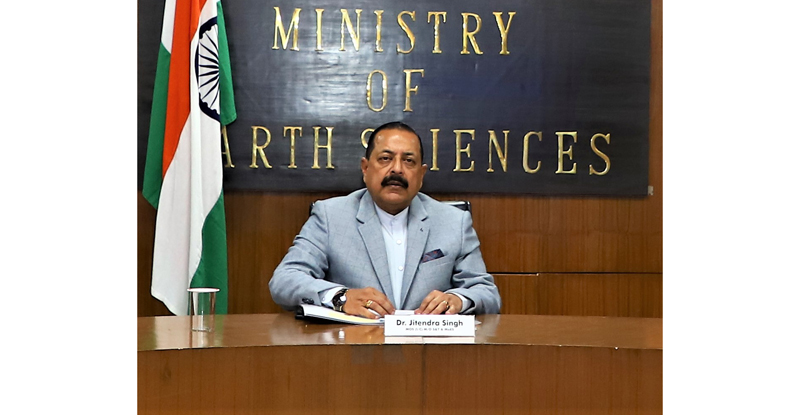Excelsior Correspondent
NEW DELHI, Jan 12 : As a part of Samudrayaan Mission, undertaken by the Union Ministry of Earth Sciences, India aims to send human being 6000 meters below sea level.
Sharing the details, Union Minister of State (Independent Charge) Science & Technology; Minister of State (Independent Charge) Earth Sciences; MoS PMO, Personnel, Public Grievances, Pensions, Atomic Energy and Space, Dr Jitendra Singh said that Prime Minister Narendra Modi had referred to Deep Sea Mission in his Independence Day address of two consecutive years in 2021 and 2022 respectively.
The mission, said the Minister, heralds India’s ushering into an era of “Blue Economy” which is going to play a major part in building India’s overall economy during the years to come.
Dr Jitendra Singh further elaborated that a vehicle called MATSYA will carry three persons to a depth of 6000 meters for exploration of deep-sea resources like minerals. This mission, he said, is expected to be realized in the next three years.
The Minister said that this mission was expected to be realised in the next three years. Singh added that MATSYA 6000 is being designed and developed by the National Institute of Ocean Technology (NIOT), Chennai under the Ministry of Earth Sciences. “It has an endurance of 12 hours under normal operation and 96 hours in case of emergency for human safety.”
Dr Jitendra Singh said that the design of the vehicle is completed and realization of various components of the vehicle is in progress. “Manned submersible facilitates the direct observation by the human in deep ocean in exploring mineral resources rich in nickel, cobalt, rare earths, manganese etc. and collection of samples, which can be used for analysis.
The Minister added that apart from the scientific research and technological empowerment as the benefits, this mission has immediate spin-offs in the form of underwater engineering innovations in asset inspection, tourism and promotion of ocean literacy.
“Development of 6000 m depth rated Integrated Mining Machine and unmanned vehicles (tethered and automated) to explore deep sea resources and biodiversity assessment,” Singh said.
The Centre had approved the Deep Ocean Mission at a total budget of Rs 4,077 crore for five years. The estimated cost for the first phase for the three years (2021-2024) is Rs 2,823.4 crore.
India has a unique maritime position, a 7517 km long coastline, which is home to nine coastal states and 1,382 islands. The mission aims to boost the Central Government’s vision of ‘New India’ that highlights the blue economy as one of the ten core dimensions of growth.


